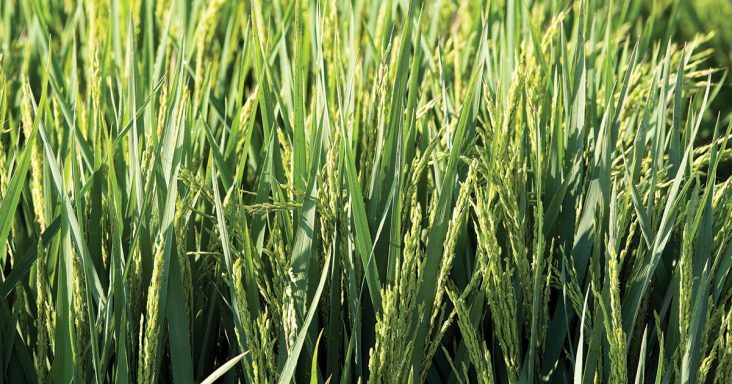Rice farmers advised to be on the look out for sheath blight
by July 19, 2023 11:52 am 640 views

Perpetual rains this summer have kept the Arkansas Delta away from the drought conditions that plagued farmers last year. The extra moisture does cause some other problems, however.
Specialists with the University of Arkansas System Division of Agriculture are advising producers to scout for sheath blight, especially as frequent rain can accelerate its growth.
Sheath blight, a disease caused by the fungus Rhizoctonia solani, is prevalent in Arkansas rice fields. It causes long, oval, purple-bordered lesions and bands of dying tissue in the leaf blades. Symptoms are typically seen as rice moves into reproductive stages. Jarrod Hardke, extension rice agronomist for the Division of Agriculture, said scouting and potential fungicide applications are recommended to avoid yield loss.
“While sheath blight presence has been increasing, it is only just starting to take off up in the canopy in some fields,” Hardke said. “Rains this week and over the weekend may aggravate it and make it more aggressive, so be on the lookout.”
Hardke noted that some fields may be out of the danger zone for sheath blight. “There are some fields making it to heading with sheath blight still low, meaning we’ve outrun yield loss,” he said.
Camila Nicolli, extension plant pathologist for the Division of Agriculture, said scouting is key to mitigating impact.
“One of the primary reasons scouting for disease is crucial is that early detection of symptoms allows for quick action. Especially for sheath blight, that requires opening the canopy to check,” Nicolli said. “The goal is to identify sheath blight at its initial stages before it begins to progress. Then we can monitor progress to determine if treatment is warranted.”
Scouting rice for sheath blight involves checking in a zigzag pattern, stopping every 50 steps and inspecting 3-foot-long sections for symptoms. If symptoms are present, the stop is a “positive stop.” Division of Agriculture specialists recommend fungicide applications at 35% to 50% positive stops, depending on which variety of rice is planted.
The U.S. Department of Agriculture’s Natural Agricultural Statistical Service (NASS) projects that about 1.311 million acres of the crop has been planted in Arkansas. That’s nearly 200,000 more acres than were planted in 2022, according to the latest NASS report released June 30.
Nationally, about 2.687 million acres have been planted, a nearly 400,000-acre uptick since the last growing season.
